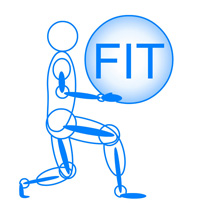If you’ve spent most or all of your workday in this position, you are a candidate for fatigue and soreness starting at the neck and working down the back. Those are the postural muscles, and you should listen to them.
Postural muscles are responsible for maintaining an upright posture. These muscles tend to become tight rather easily, which can lead to pain. You can probably feel the postural muscles working as you read this. They are doing the heavy lifting of the head, the neck and the spine.
What those muscles need are frequent breaks. Not 15-minute ones, but a 1-2 minute microbreak to protect the body against the dangers of hours of constant sitting. Microbreaking done correctly can reduce strain on the neck, shoulders and spine. Correctly means taking microbreaks throughout the day, along with mandated 15-minute rest periods and a meal break.
Chair-bound employees don’t need to leave their desks to take one. A microbreak lasts anywhere from 30 seconds to 5 minutes, and is meant to be taken as often as every 10 minutes. Microbreaks can reduce muscle fatigue by up to 50 percent in an eight-hour day, experts think.
Because of technology and automation, employees tend to overdo a single task. That can be typing on a keyboard, answering the phone, opening and sorting mail, or handling packages. neck-shoulderrestThey get on a roll, some call it “in the zone,” and their concentration is extremely high. A microbreak serves as a reminder not to stay seated or standing in one position for too long.
Try this now: Let your arms hang by your sides and gently shake your hands. Hold this position for 25-30 seconds. Breathing deeply and exhaling three or four times while your arms hang is a good relaxation technique to pair with this microbreak exercise. Our Sittingsafe® chart offers 13 exercises and recommendations for lowering fatigue and stress and feeling more energetic.
Stanford University researchers in the Environmental Health and Safety Department, who’ve studied the effects of prolonged sitting, have a message for those who spend their days chair-bound. The human body is always active when engaged in work tasks, even when seated. Frequent breaks can decrease the duration of a task and help lower the exposure to ergonomic injury risk, they advise.
Stanford’s ergonomic-wellness work led to a recommendation that employees make microbreaks a part of their workday. The Stanford team offered some ways how:
• Move the printer to another room, if possible, or away from the desk. This requires you to stand and walk over to the printer to get a printout.
• Stand when talking on the phone. A stand-up desk comes in handy for this task.
• Walk to the restroom or get a glass of water every hour.
• Break up continuous computer time by checking phone messages and reading reports.
Microbreaks are preventative, not a cure for existing back and neck injuries. Paul Hooper, DC, writing in “Dynamic Chiropratic” noted that many conditions have multiple causes and multiple solutions. “It would appear that the use of microbreaks is one such part of the puzzle,” he said.
Other research on energy management at work shows that listening to music on a micro-break boosts energy levels and wards off fatigue, too. Stretching at the desk, walking to the water fountain, or listening to a music jam (on low volume, of course!), they all make a difference in how employees feel at their jobs and about their workplaces.
Make time in the day for microbreaks, and your body and mind will do the rest.
The Sittingsafe® card offers a variety of exercises and stretches that can be done right at the desk. The illustrated card explains 13 exercises to curb muscle and eye strain. The card is available from Backsafe for $1.25. Order by calling 1-800-775-2225 or online at www.backsafe.com.

Recent Comments